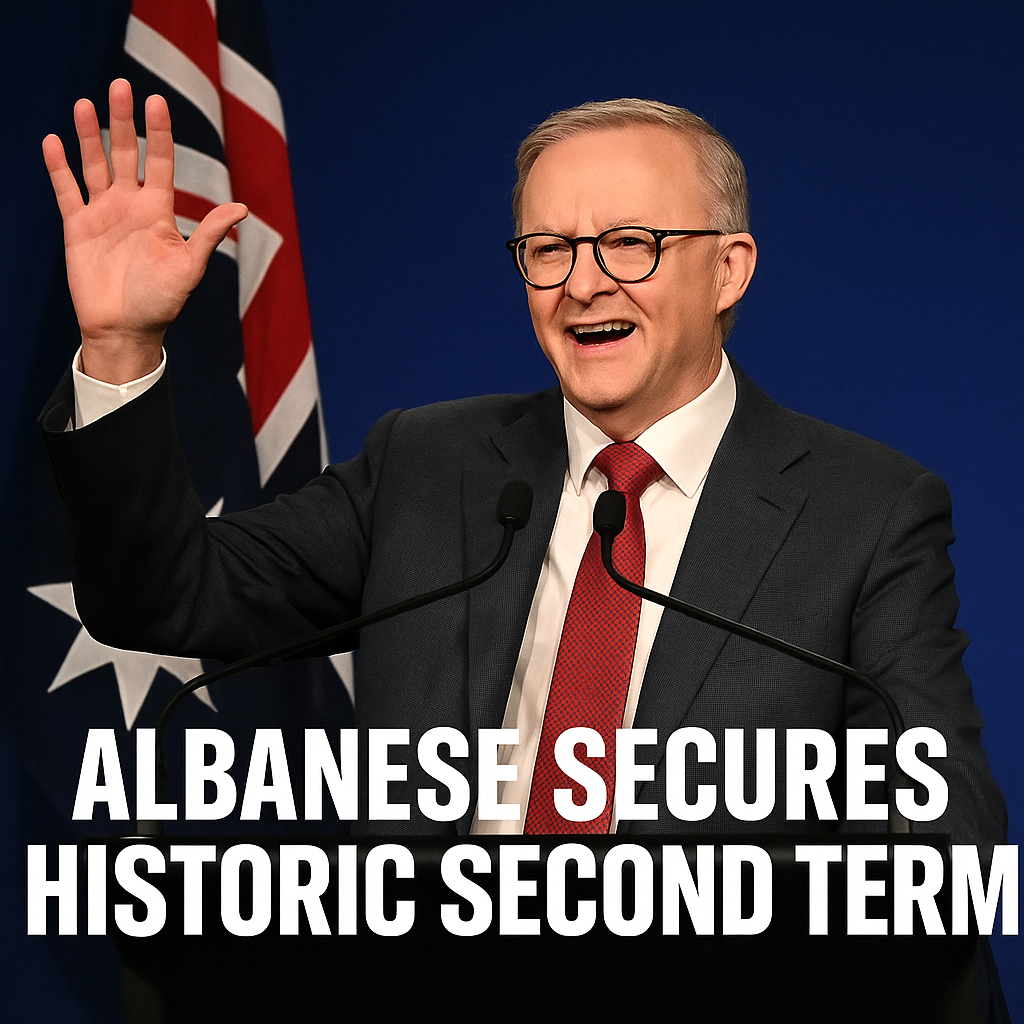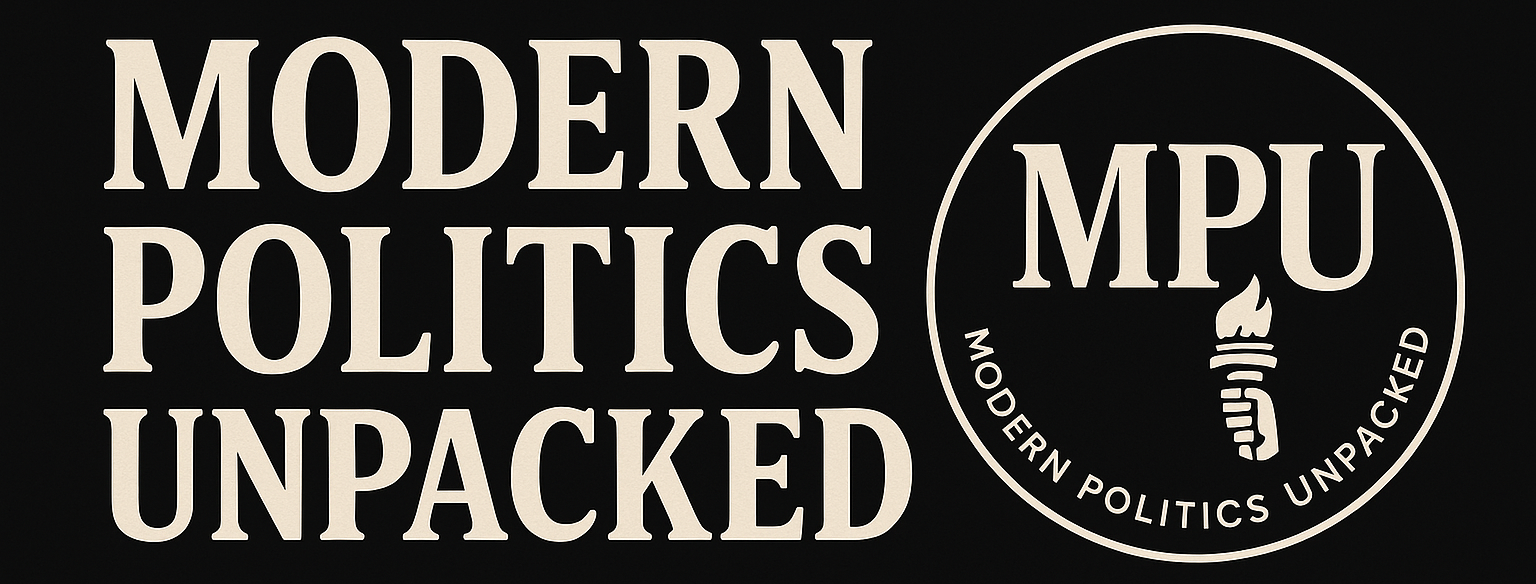Albanese’s Second Term: What Australia’s Historic Election Tells the World About Democracy in 2025

In a time when democratic institutions are under stress across much of the Western world, Australia has delivered a clear, resounding message: continuity, stability, and center-left governance still resonate. On May 3, 2025, Prime Minister Anthony Albanese secured a second consecutive term — a historic victory for his Labor Party and a significant event for global observers tracking the health of modern democracy.
Albanese’s win marks the first time since 2004 that an Australian incumbent has retained power for a full second term. His party not only held onto its parliamentary majority but expanded it — defying expectations in a political era often marked by volatility, populism, and short-lived administrations.
This article explores how Albanese achieved this rare feat, why his message succeeded, what it reveals about shifts in Australian political identity, and what lessons the world — particularly the United States and Europe — might draw from this election.
1. The Road to Re-election: A Center-Left Comeback Story
A Steady, Cautious Leader
Albanese entered the 2025 campaign with a track record defined less by headline-grabbing reforms and more by steady management. His first term focused on:
- Expanding Medicare and universal healthcare access
- Increasing investments in renewable energy
- Introducing limited cost-of-living relief packages
- Upholding Indigenous recognition through the (ultimately failed) Voice referendum
Although critics labeled his government as overly cautious, voters appeared to reward his stability, pragmatism, and avoidance of ideological extremes.
“Australians wanted reassurance in uncertain times,” said political analyst Laura Tingle of the ABC. “Albanese didn’t try to be everything to everyone. He just offered competence.”
The Labor Ground Game
Labor’s campaign was strategic and disciplined. It emphasized local issues — infrastructure, health, education — while largely avoiding culture war rhetoric. The party ran on the slogan “Moving Forward Together,” emphasizing unity over polarization.
They also benefitted from:
- Strong grassroots mobilization: A massive door-knocking and early voting strategy reached millions of Australians before election day.
- Targeted messaging in marginal seats: Key victories came in outer-suburban electorates and regional areas concerned with jobs and services.
- A weak and fragmented opposition: More on that below.
2. The Fall of Peter Dutton: Why the Right Failed to Connect
A Historic Loss
The most shocking moment of the election night came when Opposition Leader Peter Dutton lost his own seat of Dickson — a historically conservative stronghold — to Labor’s Ali France, a disability advocate who had narrowly lost to Dutton in 2019.
It marked the first time since 1929 that a major party leader had lost their seat in a federal election. For many, it symbolized the broader rejection of the Coalition’s strategy.
The Trump Echo
Dutton’s Liberal-National Coalition moved further to the right in this campaign cycle. He courted culture war voters and embraced nuclear energy as a flagship issue — proposing a rollout of 10 nuclear plants despite Australia having no active civilian nuclear program.
His strategy borrowed heavily from populist playbooks abroad:
- Anti-renewables messaging
- Immigration skepticism
- Opposition to gender and diversity programs in education
But Australians weren’t buying it. Voters viewed nuclear power with skepticism, and attempts to reframe climate transition as “elitist” fell flat. Even in traditionally conservative seats, Labor’s environmental investments outpolled the Coalition’s rhetoric.
“There’s Trump fatigue globally,” noted Monash University professor Dr. Susan Harris-Rimmer. “And Dutton failed to tailor that strategy to Australian sensibilities.”
3. A New Mandate: What the Victory Means for Policy
Parliamentary Control
Labor won at least 85 seats in the 151-member House of Representatives — a net gain of 8. This gives Albanese a comfortable governing majority without needing support from crossbenchers, allowing him to pass key reforms more easily than in his first term.
Policy Priorities for Term Two
In his victory speech, Albanese laid out four main pillars for the next phase of government:
- Housing and Cost-of-Living Relief
- Expansion of the Help to Buy scheme for first-home buyers
- Increased funding for affordable rental units
- Targeted grocery and energy price relief
- Healthcare Expansion
- More bulk-billing clinics
- Greater mental health access in regional areas
- Dental care support for low-income Australians
- Climate and Energy
- Accelerated grid upgrades
- Offshore wind projects and solar farm investments
- Carbon credits reform to align with global net-zero targets
- Indigenous Policy Reset
- After the failed Voice referendum in 2023, Albanese promised a “new dialogue” with Indigenous leaders — not via constitutional change, but via direct community funding and legal reform.
4. The People’s Choice: Who Voted for Labor, and Why
Voter Demographics
Polling data and early vote analyses showed strong support for Labor among:
- Younger voters (18–34): Particularly over climate action and rent relief.
- Women in suburban districts: Albanese’s policies on Medicare and childcare were seen as critical.
- Multicultural communities: Labor's inclusive rhetoric outperformed the Coalition's messaging on immigration control.
Interestingly, regional areas swung toward Labor in several seats, a shift long thought unlikely. Here, Labor emphasized infrastructure investment and broadband access, which proved popular.
Turnout and Trust
More than 18.2 million Australians were enrolled to vote, with over 8.5 million casting early ballots — a sign of strong civic engagement. Compulsory voting ensured a high turnout of around 91%, consistent with past elections.
In voter interviews conducted by SBS and The Guardian, many cited trust and stability as their reasons for choosing Labor.
“He’s not flashy, but I feel like Albanese actually listens,” said one Sydney voter.
“The other side was too busy fighting about nukes,” another said, laughing.
5. What the World Is Saying: International Reaction and Global Implications
New Zealand and the UK
Leaders from New Zealand, the United Kingdom, and Canada quickly congratulated Albanese and reaffirmed support for partnerships on trade and climate.
- NZ PM Chlöe Swarbrick: “A mandate for progress and inclusion.”
- UK Labour Leader Keir Starmer: “Australia has shown there is a path forward for progressives.”
The United States Angle
While President Trump has not formally commented on the result, U.S. diplomats privately welcomed Albanese’s return. With tensions rising in the Asia-Pacific, particularly over Taiwan and South China Sea routes, Australia remains a critical U.S. ally.
Under Albanese, Australia is expected to:
- Maintain its commitment to the AUKUS defense pact
- Expand diplomatic efforts with Southeast Asia
- Play a moderating role in global climate negotiations
“This keeps Australia firmly in the Western alliance,” said former U.S. Ambassador Arthur Sinodinos. “It also sends a message that not every country is succumbing to populism.”
6. Trumpism Rejected Down Under? The Broader Meaning
Populism Isn’t Dead — But It’s Evolving
Australia’s rejection of Dutton’s Trump-style tactics echoes similar shifts in other democracies:
- Brazil voted out Jair Bolsonaro in 2022.
- Poland’s opposition coalition ousted right-wing nationalists in 2023.
- France rejected Marine Le Pen in 2022 and 2027.
However, the picture is mixed. Geert Wilders in the Netherlands and Donald Trump in the U.S. are examples of right-wing populism still gaining traction.
The lesson? Populism needs local tailoring. What works in one country may not translate elsewhere.
Lessons for Democrats in the U.S.
Albanese’s victory holds insights for Joe Biden and the Democrats heading into 2026 midterms:
- Focus on economic basics: housing, healthcare, jobs.
- Avoid cultural overreach; emphasize community over conflict.
- Stay humble, practical, and steady — voters are weary of chaos.
7. The Challenges Ahead: No Victory Without Pressure
While the election was a major win for Labor, governing won’t be easy. The biggest challenges include:
The Economy
- Inflation remains high at 4.2%
- Mortgage stress is growing in capital cities
- Business groups are pushing back against wage increases
Indigenous Policy Fractures
- The Voice referendum loss left many Indigenous Australians feeling disillusioned
- Trust must be rebuilt, especially in the Northern Territory and Queensland
Climate Accountability
- Labor’s support for fossil fuel exports (particularly gas) remains controversial
- Youth activists demand faster net-zero action
- Legal pressure from environmental NGOs is mounting
Conclusion: Why This Election Matters to the World
Australia’s 2025 federal election wasn’t just a local affair. It was a referendum on what kind of democracy people want in an age of global uncertainty.
Anthony Albanese’s victory proves that:
- Stability still sells
- Voters crave competence over charisma
- Progressive values can win — if delivered pragmatically
In a world where democratic erosion is a growing concern, Australia offers a hopeful case study. And for American readers, the message is clear: politics doesn’t have to be a circus to inspire trust. Sometimes, doing the job well is enough.
